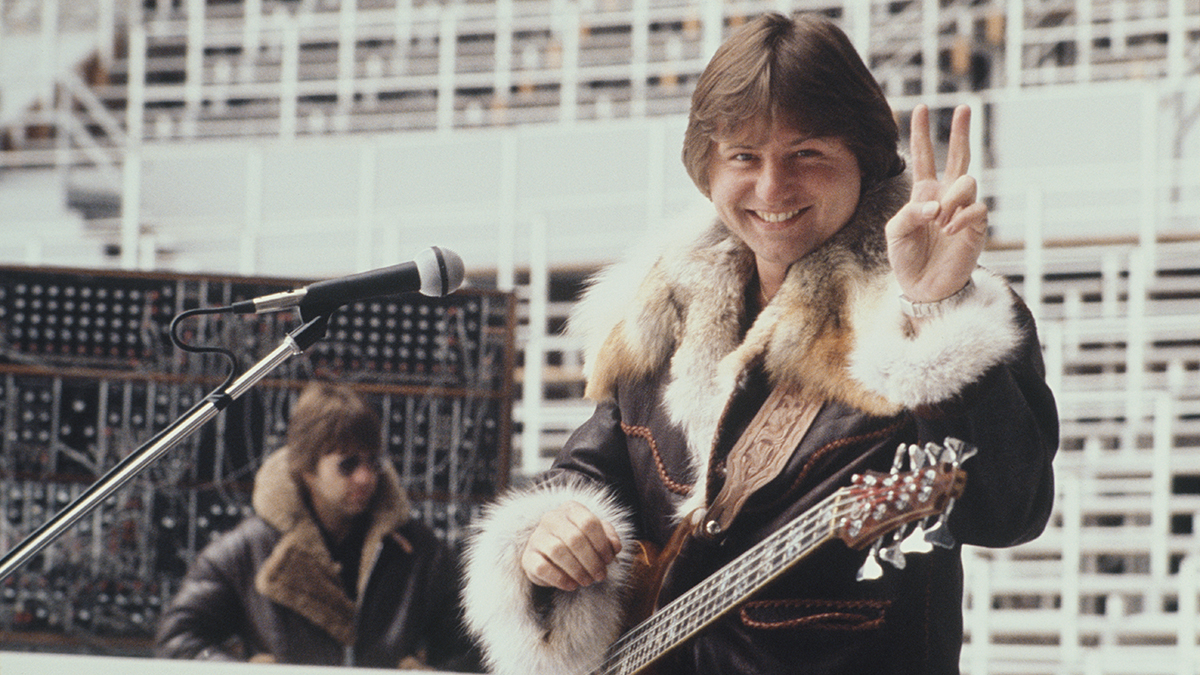Long before shred took hold, instrumental electric guitar was pioneered by players like Link Wray, Les Paul and Hank Marvin – and their groundbreaking contributions shaped the sound of every guitarist who followed
We pay tribute to the kings of twang with this electric masterclass in early rock ’n’ roll instrumental guitar

In this feature, we are taking an in-depth look at some key instrumental innovators. The rock ’n’ roll and surf guitar styles first came to prominence in postwar America, but quickly made their way across the world.
We have selected five of the genre’s best-known players/bands for inspiration: Hank Marvin, The Ventures, Dick Dale, Link Wray and Les Paul. These guitarists and bands were highly influential and their work paved the way for the next generation of six-string innovators.
The typical ’50s instrumental guitar record is short and exciting, with plenty of youthful energy. It was an era of rebellion with a tough attitude and a striking image; quiffs, snazzy suits, and winkle-picker shoes were often key components of the look.
Most of our examples are relatively simple to play, but as ever the devil is in the detail, as the correct feel and tone are essential if an authentic sounding delivery is to be attained.
One of the key ingredients was the addition of effects to augment the standard electric guitar’s clean sound. Les Paul made a massive contribution to the development of the tape echo and referred to his multi-track experimental recording techniques as ‘sound on sound’.
Guitarists like Hank Marvin went on to make great use of the first commercially available tape echo units such as the Watkins Copicat, the Italian-made Meazzi, and from America systems by Binson and others.
The tape echo can generate a variety of exciting sounds. As the tape gets worn out the repeats develop more of a pleasing, modulated sound (‘flutter’), and a ‘tape echo’ emulation remains a common feature on many modern delay pedals.
All the latest guitar news, interviews, lessons, reviews, deals and more, direct to your inbox!
Spring reverb was also a popular sound, and some nice whammy bar wobble could be added using a vibrato-equipped guitar. Units such as Leo Fender’s synchronised tremolo and Paul Bigsby’s own design had unique characters. Guitarists like Hank Marvin made this part of their signature sound.
The goal of this lesson is to equip you with some solid techniques and vocabulary to help you get that authentic ’50s guitar sound. We have five performance pieces for, each one inspired by our instrumental icons.
Major and minor triads often provide the foundation for what we hear in this style. Melodies are often built upon triads, too. In addition to the arpeggios we will be using two prime scales as the foundation for our melodies. These are the major and minor pentatonic, with extra flavour tones adding a further source of melody.
To keep you on your toes there’s a selection of keys and tempos, but since this music was driven by the guitar we have stuck to guitar-friendly keys like A, D, C and E. These keys allow us to make use of open strings and maintain that authentic vibe and exciting delivery.
Technique Focus
Guitar vibrato is an ingenious invention, and many players often overlook its expressive possibilities. All too often the arm hangs there neglected, only to be used for an infrequent divebomb!
The whammy bar sounds so cool due to the way it can add vibrato to a note or notes. With finger vibrato it’s only possible to raise the pitch of the note and return it to pitch. But the whammy bar can add a vibrato that goes both sharp and flat, very much like a vocalist, violinist or slide guitarist. The bar can provide an expressive, vocal quality, and let’s not forget its cool visual appeal.
Don’t forget that the bar can also be used to effortlessly add a beautiful shimmer to full chords. For the examples in this feature we’d recommend a ‘less is more’ approach, which is easy to achieve with a period-correct vibrato system like a Strat or a Bigsby. If you have a floating trem then a little more finesse may be required.
Get the tone
Amp Settings: Gain 4, Bass 7, Middle 6, Treble 8, Reverb 5
Select the bridge pickup and plug into a clean amp, with boost or compressor pedal if you have it. Aim for a bright ‘just breaking up ‘sound to emulate a tube amp turned up loud.
Set a short delay with one repeat that’s almost as loud as the original note, then add reverb to taste. We have notated all of the pickup selections and effect combinations in the tab.
Example 1. Hank Marvin and the Shadows
We start things off with a piece inspired by classic tracks like Wonderful Land and Apache. Simply select the bridge pickup and stamp on the tape style delay (you can use a long tail for this, rather than single-note slap-back).
Chorus 1: Bars 1-10. Even though this melody may seem easy to play, perfecting a musical delivery may take some time. The whammy bar adds a pleasing Hank-style shimmer to any held notes.
Chorus 2: Bars 11-18. Notice we have tabbed out the harmony line for you to learn. The backing track has the original melody included so the sound from our original tune can be recreated.
Bridge: Bars 19-26. Here we add some palm-muted low notes. The echo repeats up these muted notes in a percussive way that’s most effective and pure Hank.
Chorus 3: Bars 27-end. For the final repeat of the tune we are playing it an octave higher. This is a classic trick to up the excitement and get more millage out of a single melody.
Example 2. The Ventures
Our second track is inspired by classic Ventures tracks like Pipeline, Wipeout, and Walk Don’t Run. Again your bridge pickup is a must, and a little spring reverb will help with the overall surf vibe. Again, tweak the echo settings to taste.
Intro: Bars 1-6. The open A minor chord sounds great with a bit of whammy bar shimmer. You can experiment with raking the pick backwards across the strings to provide that authentic delivery of Bob Bogle and Nokie Edwards.
Verse 1 & 2: Bars 7-21. Playing melodies in the open position provides that authentic twang to the tone. You may need to be mindful of damping the open strings and keeping unwanted noise under control.
Outro: Bars 22- end. For the outro, we take the second time bar from the repeat. The double-stops on the first and second strings are played with a first finger barre and are classic ’50s instrumental guitar fare.
Example 3. Dick Dale
Our third track is inspired by classic Dick Dale tracks like Shake ‘N’ Stomp and Misirlou. As with our Ventures and Shadows tracks the key to the tone is using your bridge pickup and a healthy dose of spring reverb.
Verse 1 & 2: Bars 1-10. We begin the tune with the classic muted finger slide down the sixth string. To create this effect, use fast alternate picking while sliding your picking hand down the string. The melody is played exclusively on the sixth string and is constructed from E harmonic minor scale (E-F#-G-A-B-C-D#).
Middle 8: Bars 11-18. To provide some variety to the composition the middle section melody weaves through some simple chords. Again, this melody is played on the sixth string. To take us into the final repeat of the verse melody we use the sliding, tremolo-picked technique on the first string again.
Verse 3 & 4: Bars 19 -to end. In classic Dick Dale style, we are playing the final repeats of the verse melody on the first string. This again provides that exiting, up the octave (in fact two!) variety and excitement.
Example 4. Link Wray
Taking inspiration from tracks like Vernon’s Diamond and Rumble, you can experiment with adding a touch of overdrive into the mix here.
Bars 1-end: This tune follows a pretty standard 12-bar blues form. To maintain an even delivery with plenty of attack we’d recommend using down picking when playing the riffs. The open-position powerchords are pure Link Wray and sound great if strummed with conviction.
Example 5. Les Paul
Les Paul’s tape echo techniques were revolutionary. For this track we are using a tape delay style echo set to loud dotted eighth-note repeats.
Section A: Bars 1-10. Here we are using triad arpeggios on the top two strings, played in a swing rhythm with the tape delay set to a modulated flutter.
The combination of muted, high-register notes and the ample delay provide that signature, psychedelic sound.
Section B: Bars 11-18. For section B, we break up the rhythms a bit. If you are not used to playing up the ‘dusty end’ it may take a bit of practice to get all the notes cleanly fretted. Les used a, you guessed it, Les Paul guitar so his frets were even closer together than on the Fenders of Hank, Dick and Nokie.
Section A (repeat): Bars 19-end. We finish with a repeat of the first section.
Jon Bishop is a UK-based guitarist and freelance musician, and a longtime contributor to Guitar Techniques and Total Guitar. He's a graduate of the Academy of Contemporary Music in Guildford and is touring and recording guitarist for British rock 'n' roll royalty Shakin’ Stevens.




